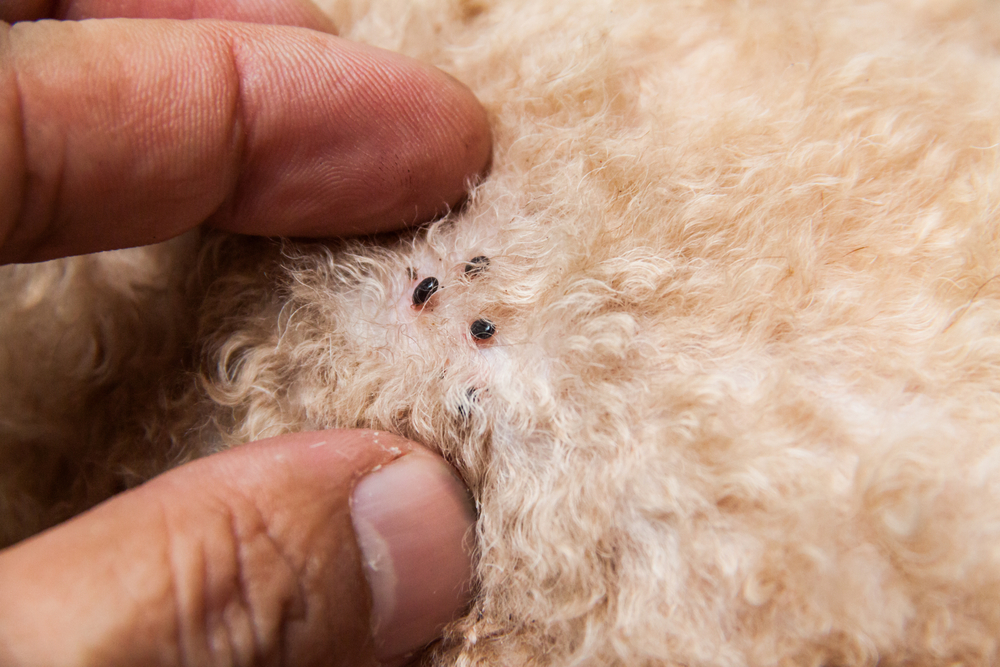Original Article: https://www.dogster.com/ask-the-vet/can-dogs-get-sick-from-other-dogs
Click to Skip Ahead
Dogs are becoming increasingly popular as pets and with good reason. These loyal, intelligent, and affectionate animals make great family members. Dogs are highly social creatures, and most dogs enjoy the company of other dogs.
Society has become more and more “dog friendly”—we have dog beaches and dog parks, doggy daycare centers, dog salons, and dog-walking groups. Many bars and cafes are now allowing (or even encouraging) the presence of dogs. This certainly makes for enjoyable experiences, for both us and our dogs.
But with so much canine crossover, do we need to be worried about the risk of diseases spreading amongst dogs? Indeed, several canine diseases are contagious, meaning they can spread from dog to dog. With good preventative measures and a reasonable amount of caution, we can minimize the risk of disease transmission among dogs.


Can Dogs Get Sick from Other Dogs?
Yes, dogs can get sick from other dogs. Several diseases are contagious, meaning direct contact between an affected or sick dog can “spread” the disease to an unaffected dog. Other diseases are not directly contagious, but are infectious or transmissible, meaning they can be contracted under certain circumstances.

How Are Diseases Transmitted Between Dogs?
- Biting and licking (exposure to saliva)
- Ingestion of fecal material
- Sneezing, coughing, and panting
- Sharing food bowls, water bowls, brushes and bedding
- Sexual transmission
The 7 Common Transmissible Diseases in Dogs
Below is a list of the seven most common diseases that can be spread from dog to dog.
1. Parvovirus
Canine parvovirus (colloquially referred to as “parvo”) is highly contagious. This virus attacks the cells that line the gastrointestinal system, causing fever, vomiting, and severe, often bloody, diarrhea. Parvovirus is spread by direct contact between dogs as well as through stools shed by infected dogs. It can also be spread by contaminated surfaces, bowls, and collars, as well as through the hands and clothing of people.
People cannot be infected with parvovirus. The virus is extremely durable, meaning it can survive in the soil and other parts of the environment for years. While treating parvovirus can be intensive and costly, there is a highly effective vaccination available. It is considered a “core” vaccine and is recommended for every dog.

2. Distemper virus
While canine distemper virus is a severe (and often fatal) disease, its incidence in the Western world is largely reduced thanks to widespread vaccination. The disease is spread by bodily secretions and causes three issues: gastrointestinal upset, upper respiratory disease, and neurologic signs.
Distemper is also part of the “core” vaccinations for dogs that should be commenced from puppyhood.
3. Kennel Cough
Kennel Cough is the common term for “Canine Infectious Respiratory Disease” (CIRD). This is one of the most common causes of coughing in dogs and is more common in dogs that have been to kennels, boarding facilities, daycare, or groomers. Kennel cough is extremely contagious and can be transmitted by aerosols released when a sick animal coughs, by direct contact with an infected animal, or by sharing contaminated objects such as bowls and bedding.
Several pathogens or bugs can be involved in Kennel Cough, including Canine Parainfluenza (a virus) and Bordetella bronchiseptica (a bacterium). Most dogs are vaccinated against kennel cough, though it is not a “core vaccine”, as is the case with parvovirus, distemper virus, and hepatitis.

4. Canine hepatitis
Hepatitis is defined as inflammation of the liver. In dogs, this is caused by a member of the adenovirus family, and it is spread through saliva and other bodily secretions. In severe cases, as is often the case in puppies, affected dogs experience fever, depression, loss of appetite, vomiting, diarrhea, and abdominal pain.
Some dogs develop edema (fluid swellings) and jaundice (yellow discoloration of the gums). As with the Distemper virus, vaccination has been very successful at both preventing and reducing the prevalence of hepatitis disease. For this reason, ongoing vaccination is essential.
5. Ringworm
People can get ringworm (technical name Dermatophytosis), and so can dogs. This is a highly contagious fungus, causing round, red, slightly raised “ring” lesions on the skin. Transmission of ringworm occurs by direct contact with the fungus. This “direct contact” could be with an infected animal or person, or by touching contaminated objects or surfaces.
The fungal spores may remain dormant in the house and environment for more than a year. Contact with ringworm fungus does not necessarily result in an infection: other factors, such as the amount of exposure, as well as the age and health status of the exposed animal, are also important. Beyond careful hygiene and avoiding exposure to infected animals, there are no preventative treatments for ringworm.
It is worth mentioning that canine ringworm is zoonotic, meaning it can also be transmitted to humans. If your dog has been diagnosed with a ringworm infection, consult your doctor or healthcare professional for advice.

6. Rabies
Rabies is a deadly disease of many mammalian species, including dogs. This virus is spread through the saliva of infected animals, causing acute and progressive encephalitis (inflammation of the brain). Initially, dogs show vague signs and behavioral changes. Next, they become vicious and behave erratically. Towards the end of the disease process, dogs become weak and paralyzed.
Veterinarians are legally required to vaccinate dogs against rabies in most U.S. states. Widespread vaccination against rabies has dramatically reduced the occurrence of this disease, and ongoing diligent vaccination is essential.
7. Parasites
Both internal and external parasites can spread between dogs. Common external parasites include mites and fleas, while common internal parasites include roundworm, hookworm, tapeworm, Coccidia, and Giardia. External parasites are spread by direct contact, while most internal parasites are spread by contact with contaminated feces.
Many parasites can be prevented with over-the-counter treatments that are available in both tablet and topical formulations. Consult your veterinarian if you need guidance choosing the right product for you and your dog.



Conclusion
Thankfully, the risk of many transmissible or contagious diseases in dogs can be mitigated by comprehensive vaccination, effective parasite prevention, and basic hygiene practices. If you are unsure if your dog is up to date with vaccinations or parasite prevention, arrange a consultation with your veterinarian.
If a dog in your family or neighborhood has been diagnosed with a transmissible disease, contact your veterinarian for advice on how to minimize exposure.
Featured Image Credit: Jne Valokuvaus, Shutterstock
Source: Dogster












